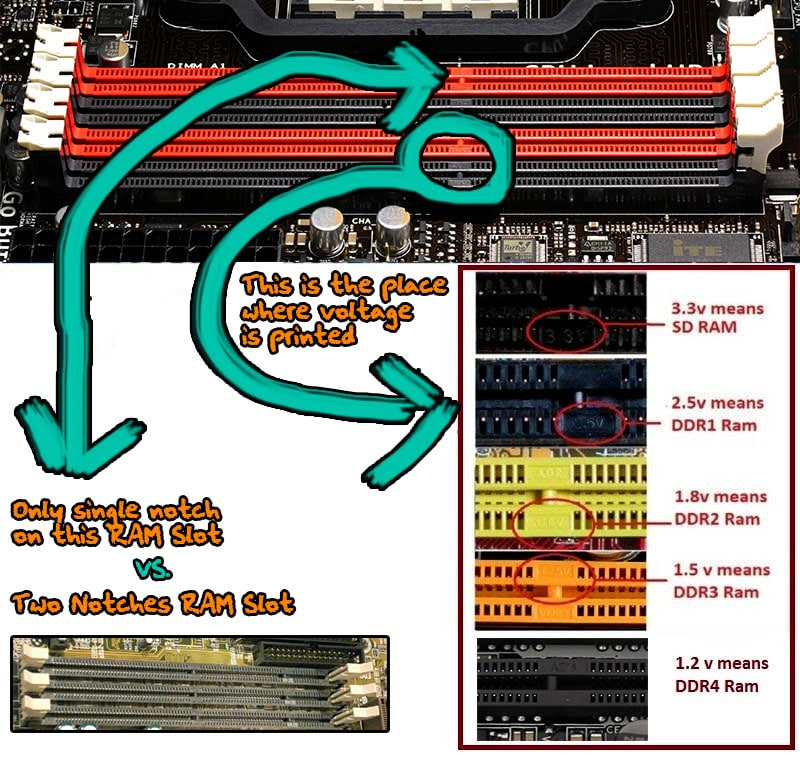In windows 10 under RAM in task manager it says 'Slots used: 1 of 2' i am searching my laptop on-line suggests that it only has one slot. How many slots I have?.Post moved by the moderator to the appropriate forum category. To check the types, speed, maximum capacity of RAM supported by ideapad 310-14IKB. If the RAM can be upgraded or replaced? How many slot(s) available? To understand the different types of RAM slots, we need to look at what types of RAM modules exist and how they differ. Once you know that, it will be easy to figure out why RAM slots are also different from one another. Empty RAM slots Open the Task Manager and go to the Performance tab. Select ‘Memory' and under the memory graph, look for the Slots used field. It will tell you how many of the total slots are currently in use. Titanic free online slot machines free play. In the screenshot below, the system has a total of 2 slots, and one of them is in use. How do you see how much RAM is in your computer? You can easily check the details of RAM in Windows 10 using the Task Manager. The task manager performance tab shows a majority of memory details including the total amount of RAM, how much is in use, committed/cached and paged/non-paged amount of RAM, RAM speed and frequency, form factor, hardware reserved and even how many slots are being used.
The total amount of memory, or RAM, a computer can have is dependent on the motherboard installed in the computer and the operating system. In general, most motherboards will support either two or four memory modules, but the type and amount of memory can differ widely from one motherboard to the next.
TipIf you are trying to find memory specifications for upgrading your computer memory, see: What type of computer memory to use in a memory upgrade?


If you are not sure what operating system you have, see: How to find what operating system is on a computer.
Microsoft Windows computers
How much ram your computer can hold depends on if you're running a 32 or 64-bit version of Windows, which depends on your CPU. The capacities are as follows, permitting you have the physical space to fit the RAM modules.
- 32-bit systems - up to 4 GB
- 64-bit systems - up to 128 GB
How To Check How Many Ram Slots Are Used In Linux
How to find out if you have a 32-bit or 64-bit version of Windows
- Press the Windows key and the Pause/Break key at the same time.
- A new window should appear that says System at the top, similar to the one below.

- Under the System section, next to System type:, you can see if your version of Windows is 32-bit or 64-bit.

Once you know the type of memory and the total amount of memory the computer supports, you can increase the amount of memory by installing additional sticks of RAM. You can also replace existing sticks of RAM with ones having a higher amount of memory.
How To Check How Many Ram Slots Are Used Windows 7
Apple macOS computers
- Click the Apple icon in the upper-left corner to open the Apple menu.
- In the drop-down menu that appears, select About This Mac.
- You should see a window open that is similar to the one below.
- Visit Apple's page for a table containing the max RAM for each machine, based on the information in the iMac section in the above window.
Once you know the type of memory and the total amount of memory the computer supports, you can increase the amount of memory by installing additional sticks of RAM. You can also replace existing sticks of RAM with ones having a higher amount of memory.
Linux and Unix-based computers

Similar to a Windows-based computer, Linux-based machines' maximum RAM is based on whether they have 32-bit or 64-bit architecture. Most 32-bit Linux systems only support 4 GB of RAM, unless the PAE kernel is enabled, which allows a 64 GB max. However, 64-bit variants support between 1 and 256 TB.
To determine how much ram your Linux-based computer supports, open the Terminal (Ctrl+Alt+T) and type in the following command:

If you are not sure what operating system you have, see: How to find what operating system is on a computer.
Microsoft Windows computers
How much ram your computer can hold depends on if you're running a 32 or 64-bit version of Windows, which depends on your CPU. The capacities are as follows, permitting you have the physical space to fit the RAM modules.
- 32-bit systems - up to 4 GB
- 64-bit systems - up to 128 GB
How To Check How Many Ram Slots Are Used In Linux
How to find out if you have a 32-bit or 64-bit version of Windows
- Press the Windows key and the Pause/Break key at the same time.
- A new window should appear that says System at the top, similar to the one below.
- Under the System section, next to System type:, you can see if your version of Windows is 32-bit or 64-bit.
Once you know the type of memory and the total amount of memory the computer supports, you can increase the amount of memory by installing additional sticks of RAM. You can also replace existing sticks of RAM with ones having a higher amount of memory.
How To Check How Many Ram Slots Are Used Windows 7
Apple macOS computers
- Click the Apple icon in the upper-left corner to open the Apple menu.
- In the drop-down menu that appears, select About This Mac.
- You should see a window open that is similar to the one below.
- Visit Apple's page for a table containing the max RAM for each machine, based on the information in the iMac section in the above window.
Once you know the type of memory and the total amount of memory the computer supports, you can increase the amount of memory by installing additional sticks of RAM. You can also replace existing sticks of RAM with ones having a higher amount of memory.
Linux and Unix-based computers
Similar to a Windows-based computer, Linux-based machines' maximum RAM is based on whether they have 32-bit or 64-bit architecture. Most 32-bit Linux systems only support 4 GB of RAM, unless the PAE kernel is enabled, which allows a 64 GB max. However, 64-bit variants support between 1 and 256 TB.
To determine how much ram your Linux-based computer supports, open the Terminal (Ctrl+Alt+T) and type in the following command:
Look for the Maximum Capacity section to see the limit on RAM.
Once you know the type of memory and the total amount of memory the computer supports, you can increase the amount of memory by installing additional sticks of RAM. You can also replace existing sticks of RAM with ones having a higher amount of memory.
Additional information
- See the RAM and memory definition for further information about each of these terms and related links.

